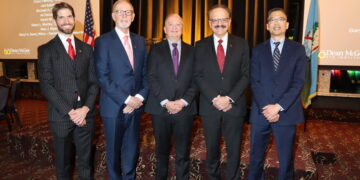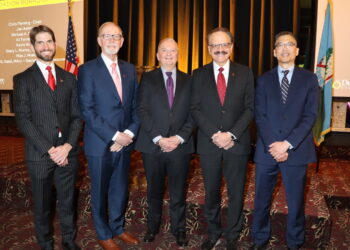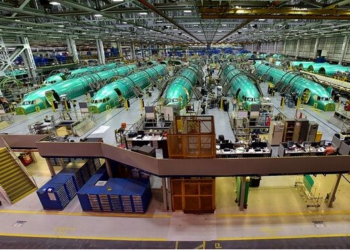STILLWATER, Okla. (OBV) – A new school year has begun, and OSU Polytech is once again offering students pathways to careers in Oklahoma industries through an expanded STEM education program that incorporates emerging AI technology into its curriculum.
OSU Polytech offers students at OSU’s Tulsa, Oklahoma City and Okmulgee campuses greater access to flexible learning opportunities and real-world learning experiences.
Oklahoma State University is Oklahoma’s largest university system. It seeks to provide flexible education options, increasing value for both students and employers by expanding access to workforce development education in high-demand fields across all academic levels, from certificate to doctoral.
University officials announced the expanded, multi-campus Polytech initiative last year, promising to grow STEM education access and enhance workforce development throughout Oklahoma.
“OSU is the state’s undisputed leader in advanced technology education. This new OSU Polytech initiative is reflective of our land-grant mission to serve the state, our longstanding tradition of service through our Tulsa, Oklahoma City and Okmulgee institutions, and our commitment to a student-focused approach to higher education. As the state’s largest university system, OSU is uniquely positioned to ensure that Oklahoma is open for business in the fast-moving areas of science and technology,” OSU President Kayse Shrum said during last year’s announcement. “Working collaboratively with industry and communities across the state, we aim to cultivate ideal graduates capable of meeting the state’s emerging workforce needs and addressing society’s most pressing challenges. This systemwide effort is an opportunity for us to better position our academic campuses to deliver on that promise and expand STEM education access and excellence statewide.”
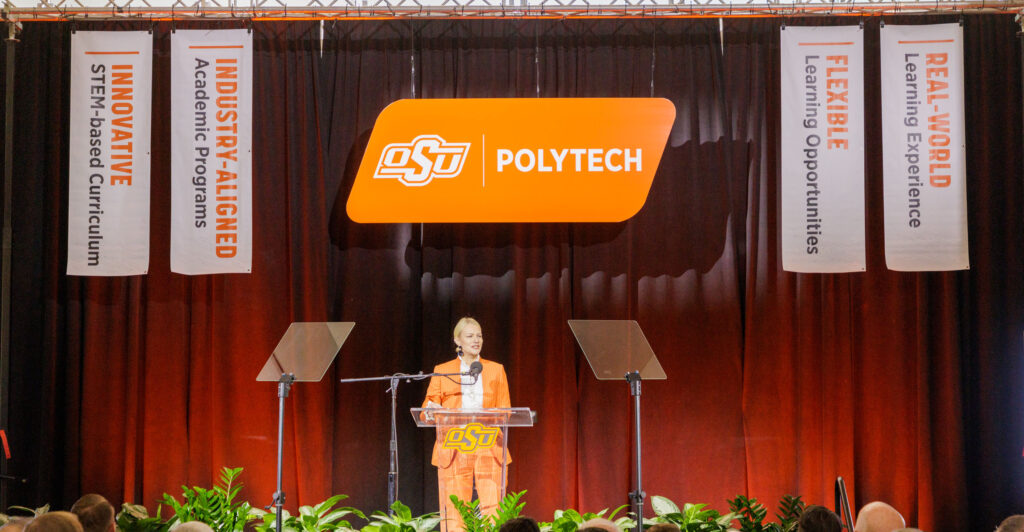
OSU Senior Vice President of System Affairs Kyle Wray spoke with OBV about OSU Polytech’s enhanced effort to grow Oklahoma’s workforce through expanded STEM education access.
Polytech has been a core part of OSU since the school was founded in 1890, according to Wray.
OSU’s focused applied learning initiative, however, started with the university’s Okmulgee campus, known as the Oklahoma State University Institute of Technology (OSUIT).
OSUIT has an employment rate of nearly 90 percent for its graduates and a median pay range for alumni between $50,000 and $55,000. College Values Online named OSUIT the second Most Affordable College for STEM in 2023.
“So, we have had an Institute of Technology for 70 years, and those programs have expanded into Tulsa,” Wray said.
OSU-Tulsa offers engineering degrees at the bachelor’s, master’s and doctoral levels, and OSU-OKC has certificate and degree programs in information technology, manufacturing and fire protection.
The new vision for OSU Polytech involves expanding OSUIT’s offerings into the Tulsa area as well as Oklahoma City and other parts of the state. OSU-Tulsa, OSU-OKC and OSUIT’s existing academic structures remain unchanged. Each institution maintains its respective accreditation.
OSU had around 3,700 students taking Polytech classes last year across more than 60 programs.
“This wasn’t something that we are late to the game in or something that we just created. We’ve been doing it for a long, long time,” he said. “It’s not a new thing. We are just expanding it.”
Many of the finest diesel mechanics in the world gained their expertise at OSUIT. The school has even trained mechanics who work for Komatsu, a Japanese multinational corporation that manufactures construction, mining, forestry and military equipment, diesel engines and industrial equipment.
“They build some of the largest earthmovers in the world, earthmovers that are three stories tall. The diesel engines that move those vehicles, that move 18-wheelers and trucks [that haul] goods across the United States and across the world, they have to have mechanics to keep those things running, and we train [those mechanics],” Wray said.
The transformative vision for OSU Polytech was developed in collaboration with Oklahoma industry representatives and will include continuous input from industry leaders to ensure OSU Polytech aligns with job market demands. This process is designed to maximize system efficiency and shape programming to meet the needs of both students and the state’s economy.
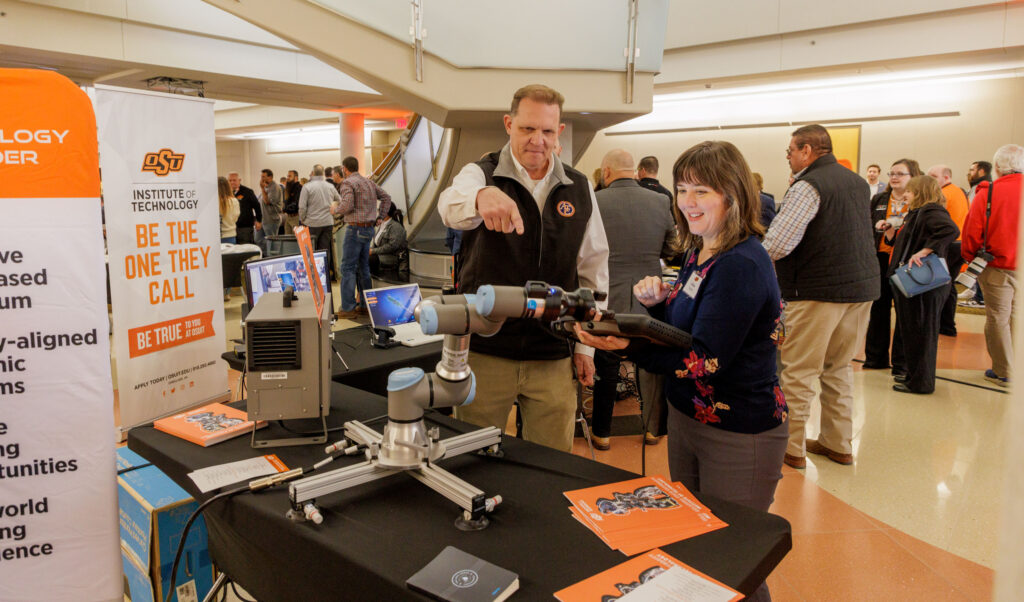
An industry leadership advisory council supports OSU Polytech by gathering market intelligence to determine what industry-aligned academic certificate and degree programs should be priority development areas for OSU Polytech.
The council has six committees that represent the following key Oklahoma industry sectors:
- Aerospace and Aviation
- Advanced Manufacturing
- Energy and Power
- Health Care and Life Sciences
- Information Technology and Telecommunications
- Supply Chain and Operations
“[These] are areas that we have a particular expertise in. The dominant institution in the state of Oklahoma for aerospace and aviation is OSU. We we own that space and we want to expand it,” Wray said.
OSU Polytech focuses on providing students the skills required to fill important jobs in those six industrial sectors.
“We’re going to visit with industry leaders in each of those six areas and ask that critical question, what kind of training do your employees need? And then we’ll continue to develop curriculum around those needs, and [those needs] change from year to year. And so, we’re already doing what we’re doing with 3,700 students, but we want to make sure we’re on the cutting edge,” Wray said. “This applied learning and talking to those industry leaders will let us know how we may need to adjust our curriculum to meet the needs of 2024 and beyond.”
The skills training students receive through OSU Polytech saves their future employers money in the long run, according to Wray.
“Training is very expensive. And if companies don’t have to do it, if they can allow Oklahoma State University to do it – because we have an expertise there and we have the faculty that has that expertise – then those companies don’t have to go to the expense of hiring people to run their training system,” Wray said. “They can send them to us to get the training they need. And then, as soon as they’re finished, then they’re being productive employees.”
OSU Polytech shares the governor and legislature’s goal to attract new companies and industries into the state that will create new jobs for Oklahomans. Polytech aims to provide Oklahomans training that will qualify them for the in-demand jobs that companies are looking to fill. And many of those jobs do not require four-year degrees. Students can get certified in a range of specialized skills at OSU, according to Wray.
“Some education requires a certificate program or very specific operations-type, STEM-type applied learning. And that’s really what we’re talking about,” Wray said. “So, when those companies look at moving into the state, they know we have a population of people that could get that education and that they could ramp up the workforce. That’s really what we’re talking about – workforce development for the state of Oklahoma.”
Go to the OSU Polytech website for more information.


